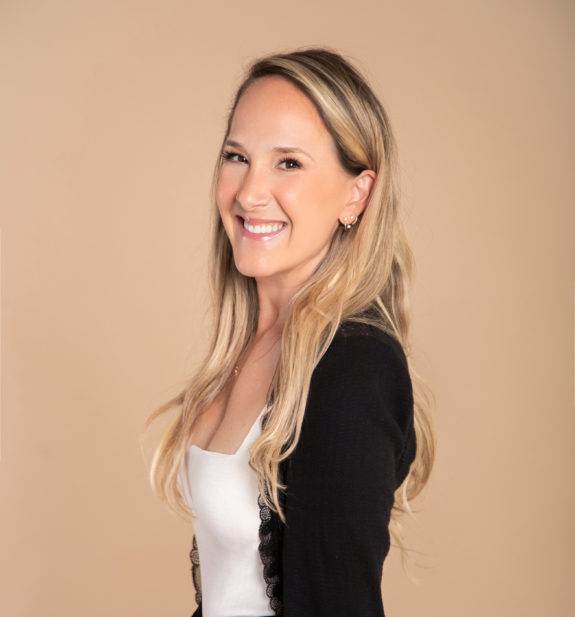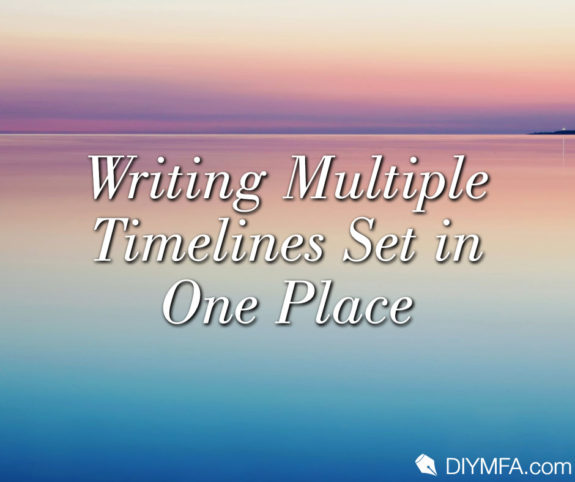Books with multiple timelines are some of my favorites to read—and to write. At times the storylines can seem disparate and disconnected, and then bam, you get that particular satisfaction as you figure out how they converge. Multiple timelines add layers to story that, when done right, can deepen plot and characters.
When I began to write my debut novel, I was fresh off a trace-my-roots trip. My dad grew up in Ukraine and emigrated to America when he was in his late twenties, and my entire family went to visit his hometown for the first time. We toured the landmarks that he’d previously only told us about as he narrated the things that were the same, and the many things that had changed. If you have done something similar with a parent or grandparent, then you know how poignant it is to walk the cobblestones they once walked. Such a journey is ripe with emotional landscape. And that emotional landscape is present anytime, really, when the past and present collide.
This trip became an inspiration to my own three-timeline debut, although multiple timelines certainly do not always hinge around a multigenerational story, as mine did. And they don’t always involve just one city either. But multiple timelines set in one city provide much fodder for emotional resonance in storytelling. Here are my top tips.
Start with Research, Including Travel if Possible
For my debut novel, with two timelines set on the Greek island of Corfu, I spent three weeks in Greece doing research. I wanted to write one timeline set in World War II-era Greece, centering around a Jewish teenage girl who escapes when the Nazis invade. And then a second timeline would be set in the early aughts and narrated by another teenage girl—the granddaughter of the World War II-era protagonist.
I first sought to take in modern Corfu, which wouldn’t be too far off from the early aughts of my modern timeline. And then, having read much pre-trip on Corfiot World War II history, I tried to find those tangible remnants of what life would have been like for my past-timeline characters. For instance, while most Jews had perished during the war, the community synagogue had been restored and was still standing. And while old houses had given way to newer apartment buildings, the area of the Jewish ghetto was still markedly preserved. If you aren’t able to travel, there are many good virtual tours that can simulate an on-the-ground experience.
There is much advice out there about researching historical fiction, and I don’t attempt to capture it all here. But when you are on the ground, you are still at the infancy of your process, gathering bits and bobs that you will massage later in story form. Pay particular attention to that which has changed in the setting between timelines, and also similarities that you might utilize in both timelines for emotional payoff.
Keep Track of What Has Changed in the Setting
First, keep track of what has changed. In the case of Corfu between World War II and the early aughts, that would be practically everything. Before the war, the island had nearly two thousand Jews, only two hundred of whom survived the Holocaust. Donkeys were once the main mode of transport, before cars came on the scene later in the century. Tourism boomed, bringing foreigners in. And so on. It is important to know not only the landscape of the times in each of your timelines, but also what took place in between. How the past spilled into the present, if you will.
As your research fills in, so too will your timelines distinguish themselves. I’ve been asked how I keep track of my timelines, and my response is that if your timelines don’t feel entirely distinct, you either haven’t done enough research, or you don’t know your characters and plot well enough.
Choose the Links Between Timelines with Story in Mind
Now for my favorite part: picking where your timelines converge. You know the fun of it is as a reader, when all of a sudden you come across a person or place in a later timeline that relates in a surprising way to a prior one. As a writer, these links can be just as fun to employ. Pick events and micro-settings that you can mine for emotional resonance, character growth, and plot twists between timelines.
Because my two main protagonists are granddaughter and grandmother, and the thrust of a subplot is the granddaughter discovering the horrors her grandmother endured, I selected places on Corfu to link the timelines. One such place was the Old Fortress on the island. As a child, the granddaughter picnicked in the meadow of the Old Fortress with her best friend. However, she doesn’t realize until much later that the Old Fortress of her childhood frolics was the same place where the Nazis imprisoned her ancestors before sending them to Auschwitz.
Other links I incorporated were character ones. For instance, there is a character whom readers might think is minor when they meet him in the modern-day storyline, but in fact he is very important in the historical one—and his importance is slowly unspooled through the book. Having him appear in both timelines increases the depth to his character development and also has him impacting characters from outside his main timeline. When his plot points reach an apex, the ensuing crescendo touches characters in multiple timelines, with the emotionality enhanced because he was briefly in another timeline outside his main one.
Finally, don’t discount the small similarities. You can even reference the same street names or ancillary characters—for instance, a shopkeeper who was young in one timeline and old in another. This will provide continuity to readers and keep them invested.
Hone Your Writing Process
While I didn’t have trouble keeping the timelines distinct in my mind, I did write the historical chapters in order, even though they are interwoven with the other timelines in the final manuscript. I did this because each timeline requires a specific tone and narrator, and for the historical ones, I found it easier to stay in that particular mindset instead of constantly breaking. But I don’t think there is one right way here. As with every piece of advice, writing or otherwise, I would encourage you to take what resonates and leave the rest.

Jaclyn Goldis is a graduate of the University of Michigan, Ann Arbor, and NYU Law. She practiced trust and estate law at a large Chicago law firm for seven years before leaving her job to travel the world and write novels. After culling her possessions into only what would fit in a backpack, she traveled for over a year until settling in Tel Aviv, where she can often be found writing from cafés near the beach. She loves to hear from readers. Her debut novel When We Were Young is available wherever books are sold. Please visit www.jaclyngoldis.com/books to learn more.







